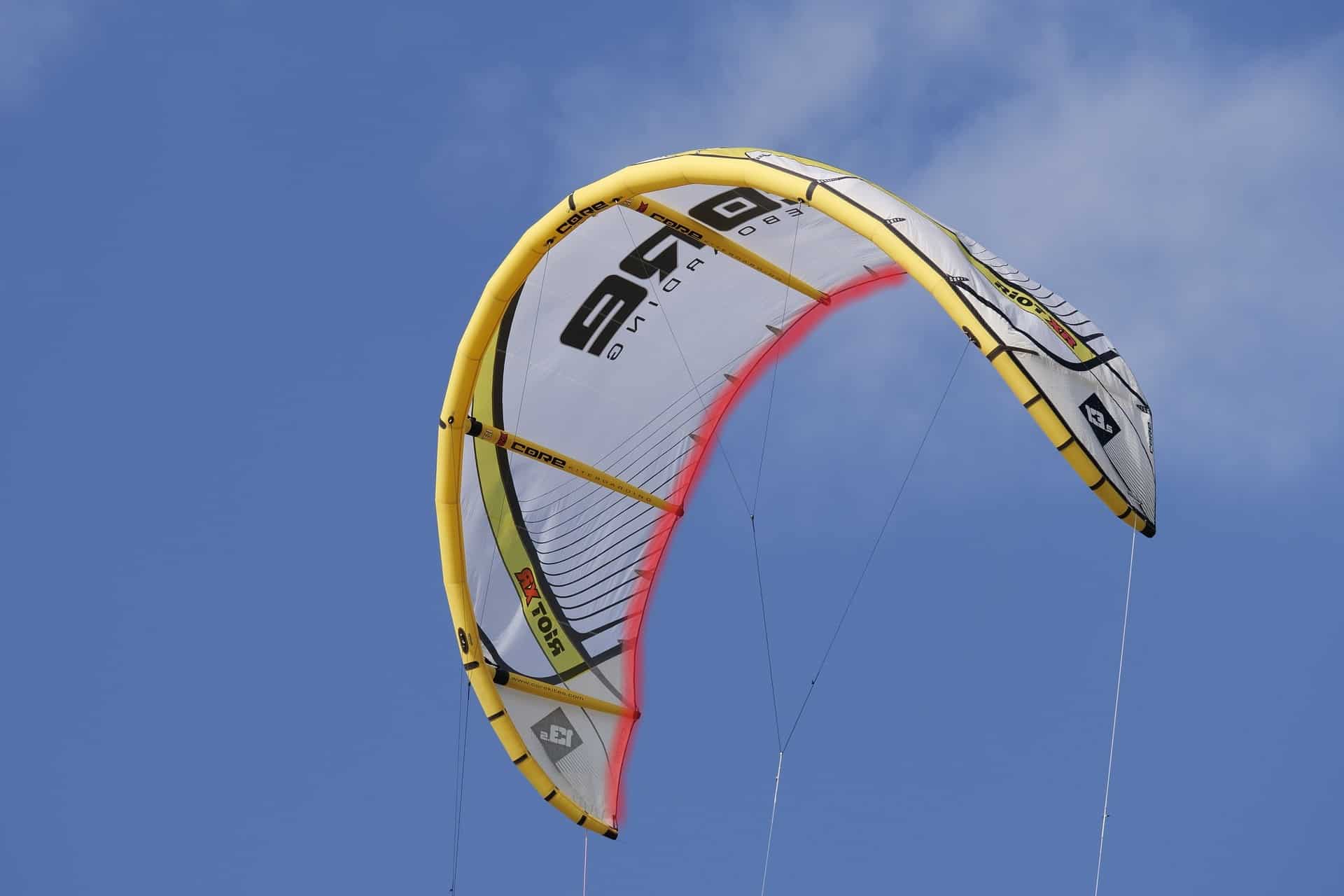Especially beginners sometimes face the problem of a kite backstall. Often the kite can be relaunched after the backstall, but there is also the possibility that the kite inverts in the fall, making a restart impossible. In this blog post we would like to give you a few tips on how to avoid a backstall.
First of all, it is important to understand what causes a backstall. A kite backstall is a flow breakdown of the kite. The current on the kite has fallen below the minimum current and the current is stalling. The kite suddenly begins to fly backwards, sags over the trailing edge (red marked in the featured image) and can no longer be steered. In extreme cases, the kite will also collapse when sinking backwards.
The easiest way to counteract a backstall is to extend your arms to depower and thus bring the kite back into a flyable angle of attack. If you have the possibility, you can also pull on the front lines (the lines that converge at the adjuster in the middle) to maneuver the kite out of the dangerous situation faster. Afterwards you should accelerate the kite quickly and strongly to restore the current that provides the lift.
If a kite has a permanent tendency to backstall, this indicates an issue with the trim of the kite. In this case the backlines are probably too short and must be tied differently to the bar system or the kite or extended a little bit.
Here is an informative video that illustrates the tips we provide:
If you have any questions about backstalling, feel free to write us a comment.
